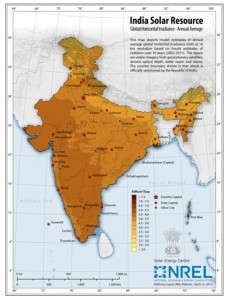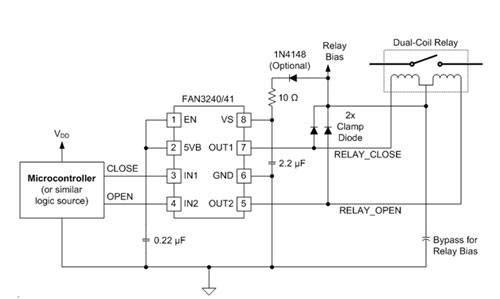Chris Siegl, Member of Technical Staff at Fairchild Semiconductor
What are your comments on Smart grid as future energy conservation
The smart grid market is expected to cross $400 billion worldwide by 2020, according to a recent study by GTM Research.
India today has annual electric power consumption of about 800 Terawatt hours (TWh), according to the Enerdata Global Energy Statistical Yearbook 2013, this places them in 5th place behind China, the United States, Japan, and almost in a tie with Russia. India’s power generation often falls short of demand, with frequent power shortages. This is cited by the World Bank as the greatest obstacle to India’s development.
Electrification is a challenge in emerging markets such as India due to lack of infrastructure and high costs of infrastructure development. Today the predominant source of low cost electricity is the coal fired steam turbine generator power plant. Traditional coal fired power plants require in place coal acquisition and delivery systems, coal storage, disposal of ash, delivery management (usually distant from consumption) and air scrubbing.
By contrast many of the energy harvesting technologies do not require massive infrastructure and can be implemented in an incremental fashion providing energy delivery early in the build out cycle. Also, because of the clean nature of these technologies, they can often be located close to the place of consumption, reducing the demands on power distribution build out. Examples of these technologies are solar and wind generation.
India is well situated for Solar with an almost ideal mapping of solar irradiance, see map below. The incremental ability of solar electric power generation is available with the first panel installations and associated power inverters which can then be paralleled with the build out of larger arrays as demand and funding comes available.
Wind power has a similar capability for incremental expansion. A recent HSBC report http://natgrp.files.wordpress.com/2013/07/india-renewables-good-bye-winter-hello-spring-hsbc-report.pdf has wind generation on par with new coal and has solar generation reaching parity in the 2016-2018 time frames. The key advantages in directing efforts to the solar and wind technologies in India are in the shortened time to market (generation) and incremental nature of the investment in the build out model.

Another harvesting technology already exploited in India is hydro, currently over 26% of power generation, the goal is to get this to 40% over the next few years. Like coal fired and nuclear plants Hydro have a long and capital intensive build out process as well as infrastructure build out requirements. These will limit the speed in which this capacity can come on line.
Hydro has the advantage of operating like a storage source, can be controlled (dispatched) much more quickly than coal fired plants (fast turn on and turn off). Hydro makes a good companion to solar and wind which both have periodic fluctuations (time periods when generation is not available or diminished – i.e. solar at night) which need to be compensated for. By pumping water into a raised reservoir when excess power is available hydro can also be used for energy storage. With the smart grid these strategies can be used to effectively manage India’s growth of electrification.
With more than 1.2 billion people in India and 230GW of installed capacity any small improvement in the utility will have a magnified effect when it comes to gains. Smart grid technologies are vital to meeting India’s deficit in electrical power.
Please specify your India smart grid roadmap?
Fairchild is a leading supplier of power electronics devices, the work horse of energy conversion, bringing cost effective efficient solutions in support of these energy markets. We are a leading supplier in the energy conversion process and are well positioned to support India’s investment in the electrification process. Specific areas where we are supporting reference designs and engineering support in India include the expanding solar generation market, the smart metering initiatives as well as demand control functions. We provide extensive design support within India from our Bangalore sales and applications support teams.
14 smart grid pilot projects were approved for 50% funding by the government of India in July 2013. The smart grid vision and roadmap document for India, a joint document by Ministry of Power. India Smart Grid Task force and India smart grid forum was also released.
Out of the total 230GW capacity the private sector contributes 73MW with approximately 12 percent coming from renewable energy sources
What are the key markets for your company? What are key factors to be considered for Indian Smart grid implementations?
Since the smart grid implementation involves the implementation of various blocks like AMI (Advanced Metering Infrastructure), CTU (Central transmission utility) etc, it is better to work with various partners involved in this. Becoming a member in India Smart Grid Forum will also help to get the latest news and updates in this segment.
What are your products for Smart Grid Technology, Can you name some of the case studies.
With the integration of renewable energy systems into existing grids catering to higher demand and improving efficiency, we can focus on Analog & Mixed Signal, power management products, sensors in the renewable energy, smart metering and the other blocks.
Fairchild is a leading supplier of power electronics devices, the work horse of energy conversion, bringing cost effective efficient solutions in support of these energy markets. The core of the energy conversion process is the inverter making the connection from the DC voltages generated by solar panels and other DC sources such as batteries into AC power on the power grid as well as power conditioning equipment. A variety of power semiconductor devices, IGBTs, MOSFETs, Diodes, Silicon Carbide devices and driver electronics make for efficient conversion solutions. An example below is a converter taking the output of a string of solar panels and conditioning these first through an isolation boost stage followed a full bridge inverter using a combination of IGBTs and MOSFETs to do the power switching.

Another aspect of improved power availability is to managing demand response when generating capacity short falls during peak usage periods. The use of disconnect relays can be used to reduce loads during this time. An example would be controlling a refrigeration compressor. For this type of application a driver for a disconnect solenoid is required. Fairchild has a special relay driver specific to this type of application. This same function is used in the latest generation of smart electric meters for remote disconnection and theft protection. A move to prepaid model can be facilitated by this capability.

We see a bright future in this market as it continues to grow and mature. These new energy sources make for a much better environment skipping some of the difficult cleanup efforts now underway of decommissioning coal fired plants and cleaning up ash piles and air pollution problems facing markets that industrialized in an earlier era. These are the hidden costs of older technologies.
Indian Power distribution, in stretched to extremely areas. What are the baselines, for smart grid implementations in such conditions? What are other challenges for Smart grid Implementations?
The base lines for smart grid implementation is access to electricity for 80 million households, availability of power at least during evenings, and reducing losses at the transmission and distribution side.
Developed countries are characterized by already having a reliable electrical infrastructure coupled with miniscule growth rates which allow them to easily focus on smartening up their grids with data gathering and analytics. However, in India, there needs to be a simultaneous focus on growing the basic electrical network to ensure that power is available to more remote villages, whilst at the same time upgrade and automate existing networks with smart grid technologies. The challenges in doing this are
- Aging infrastructure :
- A large part of the infrastructure in India is several decades old. The biggest challenge is the infrastructure in rural areas, where the range and distance are very large to the tune of 200km.In urban areas, meters are placed in very close proximity and the environment is not 100% stable for this
- There are 50+ standards in the electrical meter segment these vary based on the utility providers and every state comes out with its own set of feature and standards.
- Lack of communication standards: there are no standard protocols for communication in India. Various utilities experiment in different manner some with Zigbee, some with Proprietary 2.4 GHz, some are experimenting less than 1GHz.
- New consumption models: The new consumption models that have come up, such as automated buildings and electric vehicles, can be utilized to balance the stress on the grid.
- Securing Power Supply: Electricity demand is increasing significantly with the extension of new power supply to remote areas that currently lack it. The current SCADA based system will no longer be opened up to access once smart grid technologies are integrated to it. The challenge of keeping it secure becomes a bigger one.






